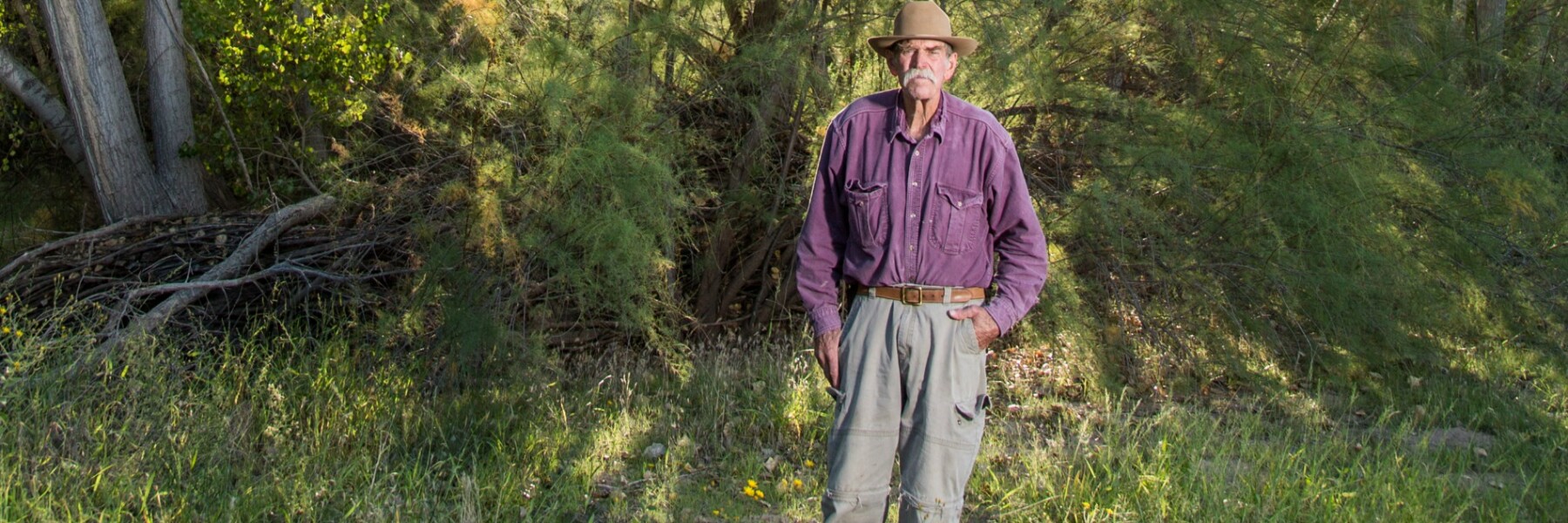Every day, when Ron Squire crosses the Gila River heading into Safford, Arizona, he watches the water ebb and flow.
Over the years, he’s seen water levels continually recede, due to the encroachment of invasive plant species, such as tamarisk (salt cedar), and overdevelopment along the river banks.
In fact, the river’s water level has fallen so dramatically in recent years, it is becoming hard to distinguish river from dry land.
Ron, who has lived in this area for over seven decades, remembers a time when the Gila, a 650-mile-long tributary of the Colorado River, carried more water. That was before the riparian zones – the riverside lands home to cottonwoods, willows and other river-loving plants – were choked out due to invasive plant species and before the current period of drought.
“My father was born in Douglas, Arizona, and he used to tell me about when he went to his place west of Phoenix, the river was always open and full of water, with large cottonwood trees. He thought of it as a nice place,” Ron says. “The Southwest area in particular, where the Gila River flows, is not what most people think about when they think of river lands. In a lot of places, the river runs underground. It wasn’t always like this.”
Ron is a third generation cattle rancher. Although his modest ranch is considerably smaller than his father’s or his grandfather’s, he’s had plenty of time to learn the correct way to manage cows.
“I’ve followed the cow all of my life,” he laughs. He doesn’t quite think of cattle ranching as an occupation though, as he’s now 73 and retired. “My occupation is a lifestyle,” he says. “It’s not just something that I do. Whether I’m sick, or feeling on top of the world, I have to take care of the farm.”
Ron’s main concern these days is finding the balance between being a good cattle rancher, while also providing a sustainable and healthy lifestyle for the living souls on his ranch.
“People are getting away from the basics of life,” he explains. “They don’t know where their food comes from and they’re not in tune with nature, so to speak. Our plan and our ideal is to become totally self-sufficient and be able to not just take care of my family, but also the people that live around me.”
Yet, it’s not as simple as it sounds. Ron knows first-hand just how much this area of the country depends on the health of the Colorado River riparian zones, and how important it is to clear out non-native species that are threatening the natural ecosystems there.
“This area where I live has an abundance of sustainable feed for people, if you know where to look, and how to harvest it. This old nasty tamarisk,” he says, shifting gears, “There’s nothing good about it.”
Tamarisk is non-native invasive species considered to be among the biggest threats to healthy riparian habitat along tributaries of the Colorado River.
Tamarisk grows in dense stands that limit access to the river for recreation and agricultural use. It consumes large amounts of water, increases soil salinity and overwhelms native plants. Tamarisk also constrains natural river processes that create and maintain riparian and instream habitat and can exacerbate the risk of floods.
Its removal allows native plants to re-establish, improving riparian habitat for virtually all western wildlife that depends on river corridors. It also re-establishes natural river processes that support instream habitat and fisheries, improves fishing and boating and can increase instream flows.
He’s happy with the way tamarisk clean-up in his area has been going, but continues to worry about the future.
He’s pledged to continue his support for the Gila Watershed Partnership, which is leading efforts in the Upper Gila to protect and improve water quality and quantity.
With hard work, he believes that tamarisk can finally be cleared out of the rivers that he has lived near all of his life.
“You have to look pretty close at this desert land. When you get out of your car, and you look around, you’ll see that there’s a lot going on in this semi-arid area. There’s a lot of little animals and there’s a lot that doesn’t meet the eye, until you get down close and look at all of the stuff that’s happening,” he says. “We have to have rain, water and healthy rivers to live. That’s all there is to it.”




